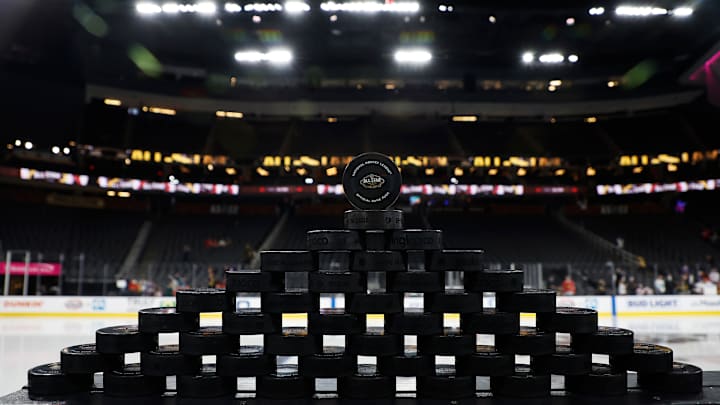Hockey is very different than every other sport. The most glaring difference is its players need to wear skates instead of cleats or sneakers because it's played on ice. Because of this, the game is much faster. The game is also played in three periods instead of halves or quarters. The most glaring difference is the object used every night. It's not a ball like football, baseball, or soccer. In fact, most sports that use anything use a ball. Softball, lacrosse, kickball, cricket, heck even Pokemon has a ball.
Yet, hockey uses a puck. While it's round like a ball, it's flat, unlike any ball you'll see. If a ball is flat, it's basically broken. This six-ounce, inch high, and three-inch in diameter piece of rubber will make or break your night if you're favorite goalie can't stop it.
We all know that hockey pucks are made of rubber, but it's a little more complicated than that. We've all had rubber in our hands, and it doesn't feel like a hockey puck. To make the traditional hockey puck, rubber must go through a process of vulcanization. That vulcanized rubber has a much harder disposition than the rubber put on the back of your pencils.
Vulcanization is a process that involves heating rubber with Sulphur, accelerator and activator at 280-320°F.
That's not always been the case. The very first hockey games used pucks made of wood. There were also cork pucks in the early days, and in a pinch, anyone can use a round rock, but that's definitely not recommended. The Victoria Hockey Club of Montreal started the process of using vulcanized rubber in the 1880s. They were considered vast upgrades to previous pucks because they didn't absorb water from melted ice, and they didn't break as easily as cork or wood pucks.
Fast forward to today, and just a few countries in the world make hockey pucks, including Canada, Russia, China, and the Czech Republic. That's right, you can't find a hockey puck made in America.
What's crazy is what the NHL does with hockey pucks before the game. They freeze them! That's so it reduces the bounce on the puck. There are also two different pucks used during the game presentation. There's a puck for practice during warmups. These are largely used as souvenier pucks you'd see autographs on sold during and after the game. Then, there are the official game pucks.
The main difference between these two pucks are the process in which they are made. Practice pucks can be mass produced with factory equipment. Game pucks are made by hand to ensure their integrity.
Typically, the NHL goes through more than 40 pucks in a game. Some are replaced for colder pucks, while others and shot into the crowd, although that doesn't happen as much after the installation of netting behind the goals.
So, there you have it. The anatomy of a hockey puck. The process is complicated, but it's necessary to play this beautiful game. Maybe one day, they will find an easier way to vulcanize rubber, but for now, sulphur it is.
